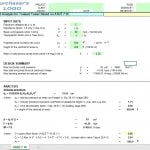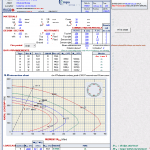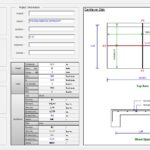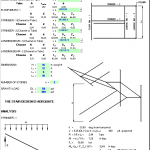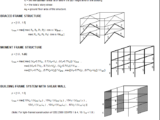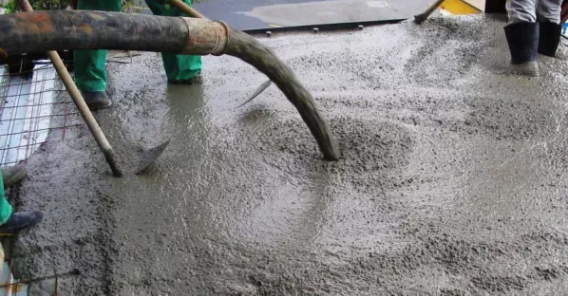
Types and Roles of Admixtures in Pumpable Concrete
1 November 2024 Off By The Engineering CommunityTable of Contents
Types and Roles of Admixtures in Pumpable Concrete
Concrete, the most widely used building material globally, is essential in modern construction, particularly in large-scale projects that require efficient pouring methods. Pumpable concrete, designed for easy pumping without segregation or bleeding, relies heavily on admixtures to improve its performance and workability. Here, we explore the various types of admixtures used in pumpable concrete and how each one contributes to its optimal properties.
Understanding Pumpable Concrete and the Need for Admixtures
Pumpable concrete is a specialized mix that can be transported through pipelines or pumps with ease. It needs to have specific properties, such as:
- Workability: Ensures the concrete flows smoothly and consistently through the pump lines.
- Cohesion: Prevents segregation of aggregates and other ingredients during pumping.
- Low Bleeding: Minimizes water separation, which can compromise concrete strength.
To achieve these characteristics, contractors and engineers use a range of admixtures, which are added to the concrete mix in specific proportions to enhance or modify its properties.
Types of Admixtures in Pumpable Concrete
Admixtures are classified into several types based on the property they modify in concrete. Here are some common types of admixtures used in pumpable concrete:
1. Plasticizers (Water-Reducing Admixtures)
- Role: Plasticizers are used to improve the workability of concrete without increasing the water-cement ratio. They make the concrete easier to pump by reducing friction within the mixture.
- Benefits: These admixtures allow for easier placement and compaction, leading to a denser and stronger finished product.
- Common Use: Typically used in situations where maintaining strength while improving fluidity is essential.
2. Superplasticizers (High-Range Water-Reducing Admixtures)
- Role: Superplasticizers provide a high level of workability and flow without requiring additional water, making the concrete more pumpable.
- Benefits: They enable rapid pumping over long distances and allow for a more complex formwork without compromising strength.
- Common Use: Used in high-rise building construction, where concrete needs to be pumped vertically over large distances.
3. Air-Entraining Admixtures
- Role: These admixtures introduce microscopic air bubbles into the concrete, enhancing its freeze-thaw resistance and improving workability.
- Benefits: The tiny air pockets reduce friction, making the concrete easier to pump. Additionally, they enhance durability by reducing the risk of cracks caused by freeze-thaw cycles.
- Common Use: Particularly beneficial in cold climates where freeze-thaw resistance is a priority.
4. Viscosity-Modifying Admixtures (VMAs)
- Role: VMAs improve the cohesion of the concrete mix, reducing segregation and bleeding, which are crucial in pumpable concrete applications.
- Benefits: By maintaining a uniform mix, VMAs help prevent blockages in pump lines and ensure even distribution in formworks.
- Common Use: Ideal for high-performance and self-consolidating concrete where maintaining consistency is critical.
5. Retarding Admixtures
- Role: These admixtures slow down the setting time of concrete, which is helpful when transporting concrete over long distances or in hot weather.
- Benefits: They allow more time for pumping and placement without compromising the strength and integrity of the final structure.
- Common Use: Retarders are frequently used in large construction projects where concrete is mixed off-site and requires time to reach the pour location.
6. Accelerating Admixtures
- Role: Contrary to retarders, accelerators speed up the setting process, allowing concrete to reach initial strength faster.
- Benefits: Useful in colder weather conditions where setting times are prolonged, accelerators help maintain the schedule and reduce construction delays.
- Common Use: Applied in quick-setting applications or when a rapid turnaround is needed.
How Admixtures Improve Pumpable Concrete Properties
Each admixture plays a unique role in ensuring the concrete remains pumpable while maintaining structural integrity. Here’s how these admixtures contribute to high-quality pumpable concrete:
- Enhanced Workability: Plasticizers and superplasticizers reduce the amount of water required, achieving the right consistency for pumping while maintaining strength.
- Improved Cohesion: VMAs keep the mix together, preventing separation of materials during pumping. This makes for a smoother, uninterrupted pumping process.
- Controlled Setting Times: Retarders and accelerators control the curing process, adapting to site conditions and ensuring timely placement without compromising strength.
- Increased Durability: Air-entraining admixtures provide freeze-thaw resistance, crucial for structures exposed to fluctuating temperatures.
Advantages of Using Admixtures in Pumpable Concrete
Admixtures offer a variety of benefits, both immediate and long-term:
- Reduces Labor and Time: Admixtures simplify the pumping and placement process, making it faster and more efficient.
- Increases Structural Integrity: By maintaining the concrete’s cohesion and reducing water content, admixtures contribute to a denser and stronger finished product.
- Adaptability to Conditions: Whether dealing with extreme temperatures or long pumping distances, admixtures allow for greater flexibility and control.
- Cost-Efficiency: Reducing the water-cement ratio without compromising workability results in more economical concrete mixes without sacrificing quality.
Best Practices for Using Admixtures in Pumpable Concrete
When incorporating admixtures, it’s essential to follow these best practices:
- Proper Dosage: Use the correct amount of admixture based on the manufacturer’s guidelines and the project requirements. Overuse or underuse can lead to undesirable results.
- Compatibility Testing: Ensure compatibility between different admixtures. Some combinations can lead to adverse reactions affecting concrete performance.
- Mix Design Optimization: Collaborate with a structural engineer to design a mix that takes full advantage of each admixture, balancing workability, strength, and durability.
Conclusion
Admixtures are indispensable in creating high-performance pumpable concrete that meets the demanding requirements of modern construction. By selecting the right combination of admixtures, engineers and contractors can produce concrete mixes that are easy to pump, durable, and cost-effective. From enhancing workability to improving durability, the role of admixtures in pumpable concrete cannot be overstated.
Incorporating these admixtures effectively allows for better control over the concrete’s properties, ensuring that it meets the specifications needed for each unique project. As technology and admixture formulations advance, the possibilities for optimizing pumpable concrete will continue to expand, enabling safer, faster, and more sustainable construction practices.

